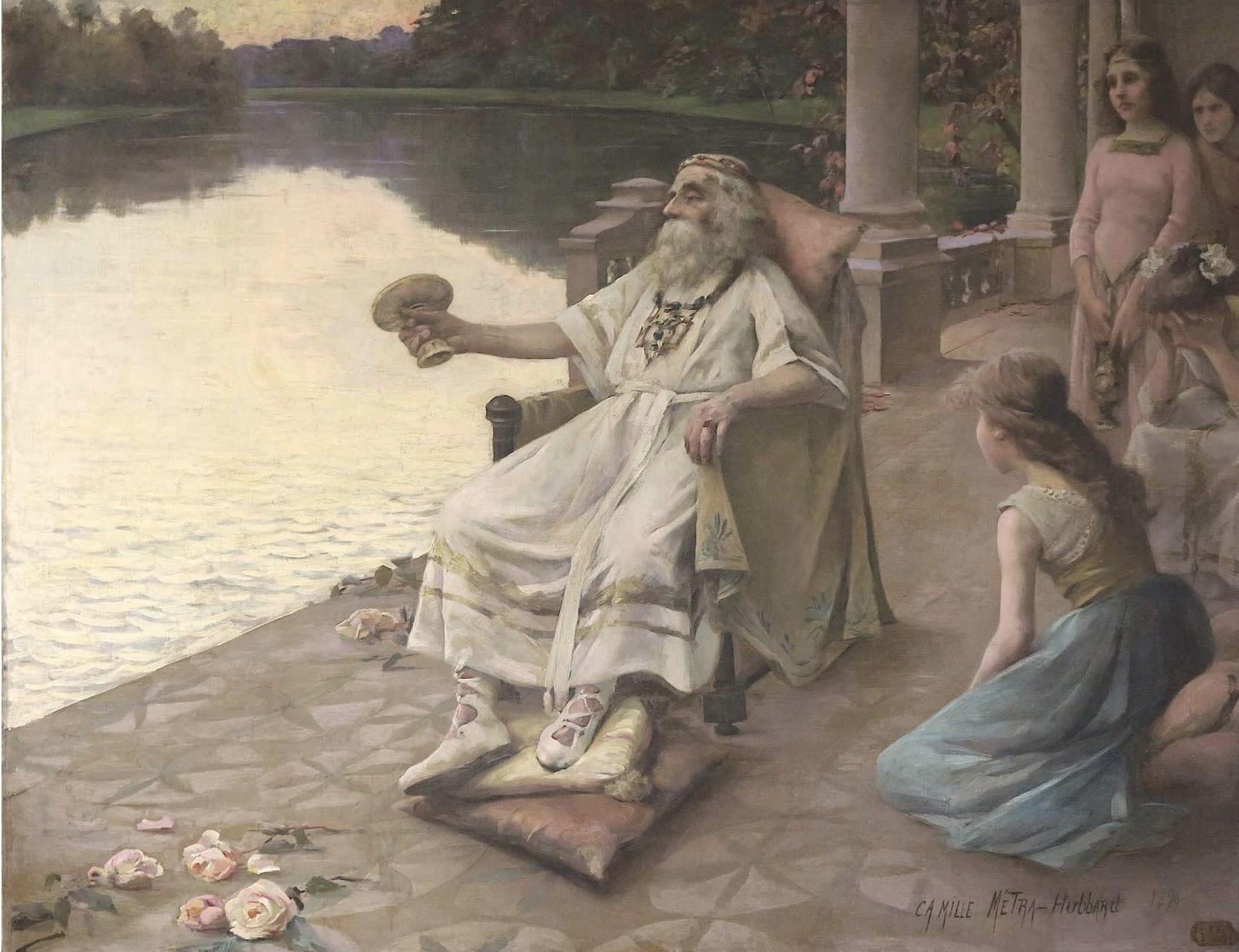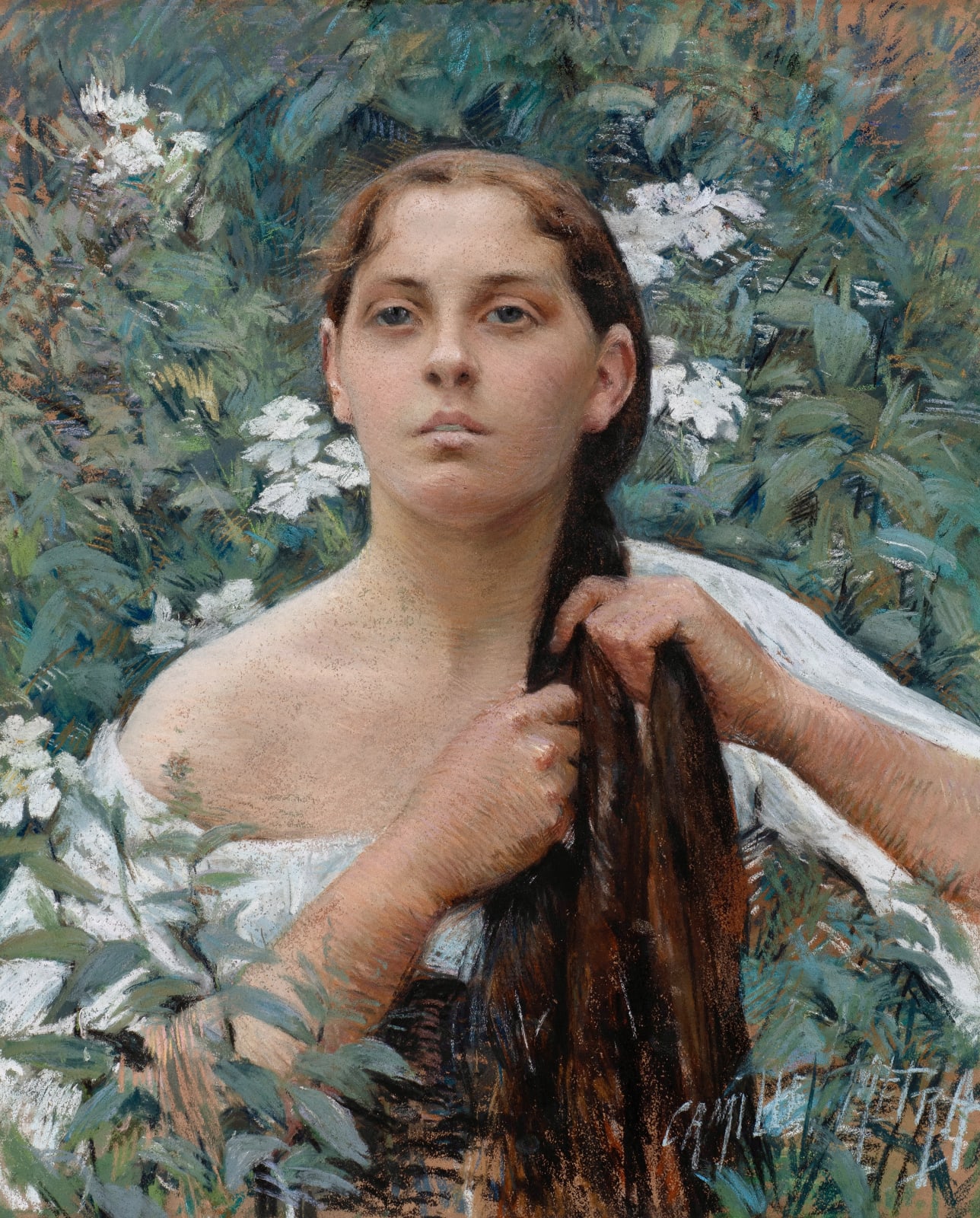Camille Métra (1864 - 1936)
A woman pleating her hair, possibly La Cigale
Signed lower right: CAMILLE METRA
Pastel
65 x 54 cm. (25 ½ x 21 ¼ in.)
Provenance:
Aschan Galerie, Ville d’Avray
A woman pleating her hair, possibly La Cigale
Signed lower right: CAMILLE METRA
Pastel
65 x 54 cm. (25 ½ x 21 ¼ in.)
Provenance:
Aschan Galerie, Ville d’Avray
Exhibited:
Possibly the Salon of the Sociéte Nationale des Beaux-Arts, Paris, 1895, no. 1528.
Camille Métra exhibited regularly at the Salon of the Sociéte Nationale des Beaux-Arts from 1891 to 1903, using her maiden name before 1895 and exhibiting as Hubbard-Métra after her second marriage. Métra was also a member of the Union of Women Painters and exhibited frequently at their annual exhibition between 1891 and 1911.
Although we know little of her biography, Métra’s extant work reveals a talented artist, working in a late Academic and Art Nouveau style. Active primarily as a pastellist, though also confident with oil painting, Métra seems to have focussed on arcadian subjects, often derived from literary and mythological sources. She was also active as a portraitist, particularly of children. After the death of her first husband in 1892, Métra married the French politician Gustave-Adolphe Hubbard, with the couple divorcing in 1904.

Fig. 1, Camille Métra, The cup of the king of Thulé, 1896, oil on canvas, 114 x 146 cm, Galerie Lardemelle
Signed with her maiden name, the present work likely predates Métra’s marriage in 1895. The pastel may be La Cigale, exhibited at the Salon of the Sociéte Nationale des Beaux-Arts in 1894. Drawn from La Fontaine’s fable The Grasshopper and the Ant, the title alludes to the fate of one who (like a grasshopper) ‘sings all summer’ instead of preparing (like an ant) for the hardships of winter. By Métra’s time, La Cigale had become a metaphor for the beautiful bohème who lives with no thought for the future. A popular artistic subject in the late 19th century, La Cigale was typically depicted as a young brunette set against a verdant backdrop of foliage, usually with a musical instrument though not always so. Whatever the case, with her flowing tresses and emerging from a dense forest of vegetation, Métra’s young woman is an archetypal Art Nouveau subject.



